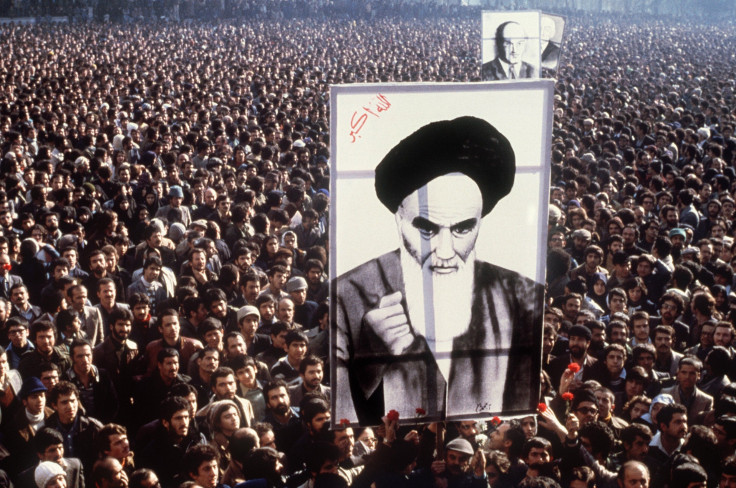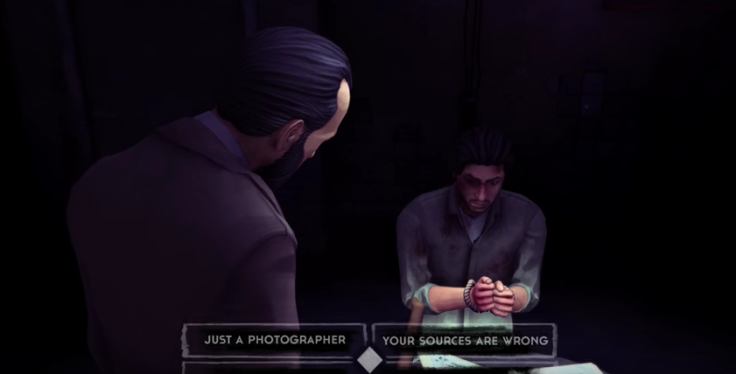Why ‘1979 Revolution’ Creators Built A Game Based On Iranian Revolution

Game developers, like Dan Gray of the popular “Monument Valley,” tout gaming's potential for escapism -- a way to break away from the real world to experience and learn from another.
But Navid Khonsari thought: Why go somewhere that's imaginary? Why not take people into a real revolution?
Khonsari has been the cinematic mastermind behind “Grand Theft Auto,” “Vice City” and other shooter games. But for the last five years, he’s been working on a project with his team at iNK Stories, an independent studio in New York City, that takes players to a real-world event.
This month, he released “1979 Revolution: Black Friday,” a game that depicts the Iranian Revolution, when Shah Mohammad Reza Pahlavi was overthrown and Ayatollah Ruhollah Khomeini rose to establish an Islamic republic. It was during this transition that dozens of American citizens were held hostage in Tehran for 444 days.
The game was recently banned in Iran. “Iranians will quickly realize the hostile intentions and objectives of the developer if they see the game,” National Foundation for Computer Games Director Hassan Karimi said in a statement, the Tehran Times reported.
However, the game’s 69 reviews on Stream, where it is currently available, are mostly “very positive.” International Business Times sat down with Navid and iNK co-founder Vassiliki Khonsari at the second annual Games & Media Summit, hosted recently by the nonprofit Games for Change, to discuss what “1979 Revolution” really shows, as well as the business of gaming.
International Business Times: Why choose the “1979 Revolution” as your topic?
Navid Khonsari: Quite simply it was the environment for gameplay. Everything is chaotic. You don’t know who you can trust, who you can’t trust. Massive gaps between your friends and political ideology. Generational gaps between your parents and how they think they should be going about things and how you do go about it. It just seemed like the perfect bed to have an adventure game, which is really at the core of what we’re doing.
IBT: You announced the project four years ago. What happened over that time?
Khonsari: It took us two years to make the money. It took us another two years to make the game, and we just released it two weeks ago, and we’ve already been banned in Iran.
I’ve been banned for the "Grand Theft Auto" games I’ve made, and now I’ve been banned for something that’s on the other side of the spectrum. Maybe it’s just me.

IBT: Is everything you have here fact?
Khonsari: We had academic, religious and cultural advisers on board. We needed to make sure that we got everything accurate. We did over 40 interviews from a huge spectrum of background, culturally, social class, and just had a huge research team that just went endless.
We didn’t want it to be educational. We didn’t want it to be, “It’s about this. Let me tell you everything.” We said, “We want this to be super fun. Let’s make this engaging. Let’s make this emotional.” And the fact that you see women watching across in ’70s garb, that in itself should be enough to say, “Hey man, not everyone was wearing veils as what we’ve seen from the last 35 years.”
It’s not about black or white, but like shades of gray, and we’re actually all a lot more similar, and that pop culture is really this great universal language.
IBT: What’s the reaction been?
Khonsari: The reaction’s been phenomenal. I think the emotional journey has resonated with a lot of people. I think the fact that they get involved in the game and that they really can feel the characters. Even in the interrogation, you can feel those two individuals. The reviews have been great, the user experience has been great, and now our goal is to get this out in front of more and more people.

IBT: It’s currently only on Steam. What systems are next?
Khonsari: This will be on smartphones as well as tablets, and it’s going to be on consoles, and it’s going to be a unique VR experience. For just one interrogation scene, we’ve rewritten the whole script, so while it utilizes the same characters and environment, it’ll be something totally fresh to experience.
IBT: Are you building for a specific VR system?
Khonsari: Right now we’re just doing it for Oculus because that’s what we’ve been doing our dev testing in, but we look to be agnostic across the hardware. We’re really interested in doing it for Sony. I did a VR piece for Sony last year. I’m not really allowed to talk about it.
IBT: Can you tell me what’s so great about Sony?
Khonsari: I like their approach to the market. I think Sony is very aggressive about having an impact on the gaming industry and just focusing on that experience. And I like their price point, that it’s kind of tied into the Playstation 4, all those elements are factors into not having to buy a high-powered PC.
But at the same time, I’m also a fan of the Google Cardboard because I love the democratization, so I think we’re going to be able to fit into that as well.
IBT: Was getting banned in Iran to be expected?
Khonsari: I expected for it to create hostility. I didn’t think we’d get a government statement that would say, “This game is banned,” and the fact that they had a warning to parents not to let their kids play it is kind of mind-boggling. They can play all these shooters, all these other games, and yet because this isn’t in line with the way the political landscape is over there.
Vassiliki Khonsari: Part of the reason they’re claiming it’s inaccurate is it’s not representing the events as Islamic revolution because we’re detailing the gray area, the facts that different ideologies, different economic classes, different social classes came together to overthrow the Shah.
That was our interest. When you start picking apart the fabric, you start looking at the threads. The social unraveling, the unraveling of families, how women became the collateral damage. What we were doing is not try to process it for people. … We wanted to start from the very beginning and represent the ecstasy of brotherhood. That’s the glue that moves these mass movements together.
© Copyright IBTimes 2025. All rights reserved.




















